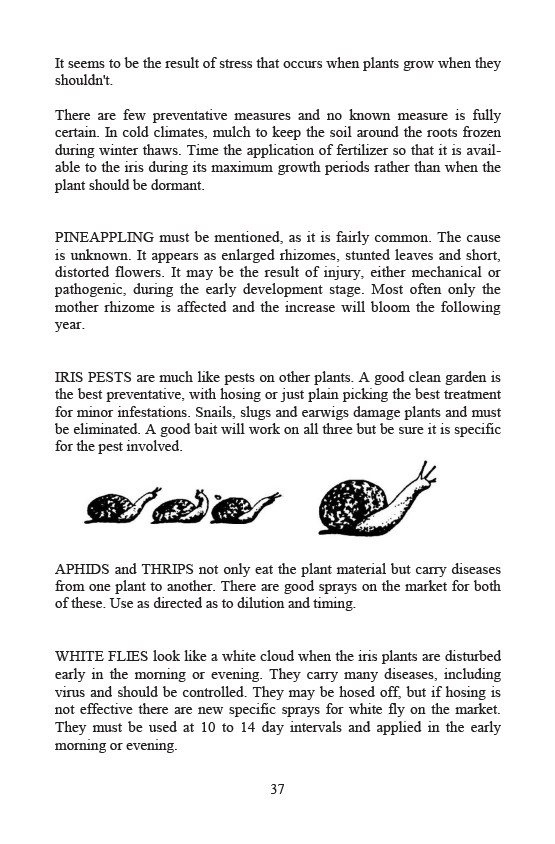
It seems to be the result of stress that occurs when plants grow when they
shouldn't.
There are few preventative measures and no known measure is fully
certain. In cold climates, mulch to keep the soil around the roots frozen
during winter thaws. Time the application of fertilizer so that it is avail-able
to the iris during its maximum growth periods rather than when the
plant should be dormant.
PINEAPPLING must be mentioned, as it is fairly common. The cause
is unknown. It appears as enlarged rhizomes, stunted leaves and short,
distorted flowers. It may be the result of injury, either mechanical or
pathogenic, during the early development stage. Most often only the
mother rhizome is affected and the increase will bloom the following
year.
IRIS PESTS are much like pests on other plants. A good clean garden is
the best preventative, with hosing or just plain picking the best treatment
for minor infestations. Snails, slugs and earwigs damage plants and must
be eliminated. A good bait will work on all three but be sure it is specific
for the pest involved.
APHIDS and THRIPS not only eat the plant material but carry diseases
from one plant to another. There are good sprays on the market for both
of these. Use as directed as to dilution and timing.
WHITE FLIES look like a white cloud when the iris plants are disturbed
early in the morning or evening. They carry many diseases, including
virus and should be controlled. They may be hosed off, but if hosing is
not effective there are new specific sprays for white fly on the market.
They must be used at 10 to 14 day intervals and applied in the early
morning or evening.
37